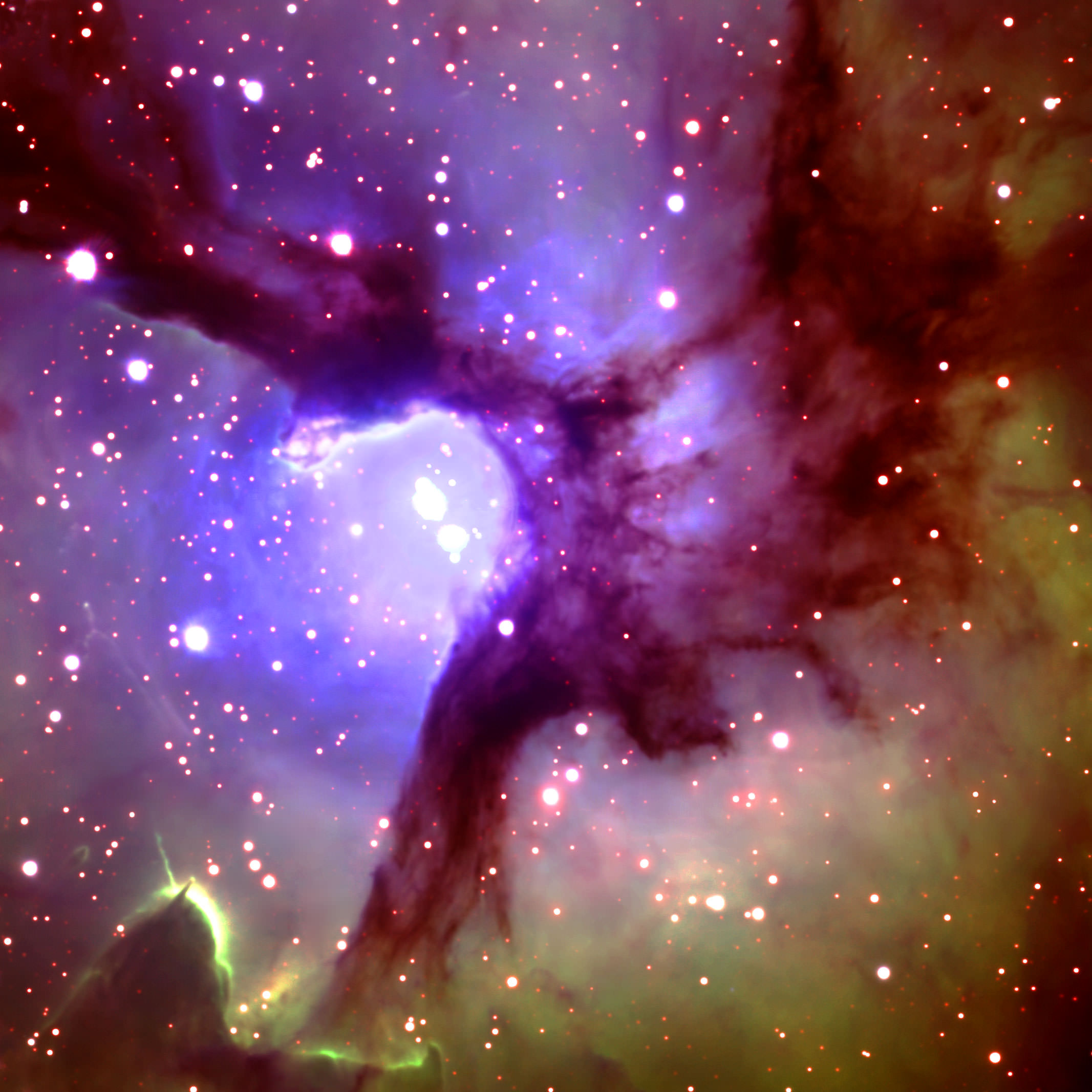Its time for another "Where in the Universe" challenge. I'll admit, this one is a little unusual. And I'll also admit, the picture here is just part of of a larger image. But, showing the entire image might give it away. Can you guess what this is? This challenge requires high energy for our readers to undertake, I know, and I appreciate everyone who has written to say how much they enjoy "Where in the Universe." We search across the sky, across the galaxy, and across the universe to find unique images, and hopefully this challenge provides a welcome diversion to your day. Have you made a guess, formulated a speculation, or deduced a deduction? Or do you just
know
what this is? No peeking below until your guesses are in....
In honor of the successful launch of GLAST today, this image is in memory of the last orbiting gamma ray telescope, the Compton Gamma Ray Observatory. This is the all-sky map produced by the EGRET instrument, or the Energetic Gamma Ray Experiment Telescope. Here's the full image:
This image shows the emissions from interactions between cosmic rays and the interstellar gas along the plane of our Galaxy, the Milky Way. Some point sources in this map are pulsars along the plane. For example, the Crab and Geminga pulsars are found near the extreme right side of the EGRET all-sky map. One of the major discoveries made by EGRET is the class of objects known as blazars - these are quasars that emit the majority of their electromagnetic energy in the 30 MeV to 30 GeV portion of the spectrum.
The Compton Gamma Ray Observatory was the second of NASA's Great Observatories. Compton was launched on April 5, 1991 aboard the space shuttle Atlantis, and was safely deorbited and re-entered the Earth's atmosphere on June 4, 2000.
How'd you do?
Image source:
Compton Gamma Ray Observatory site
 Universe Today
Universe Today
